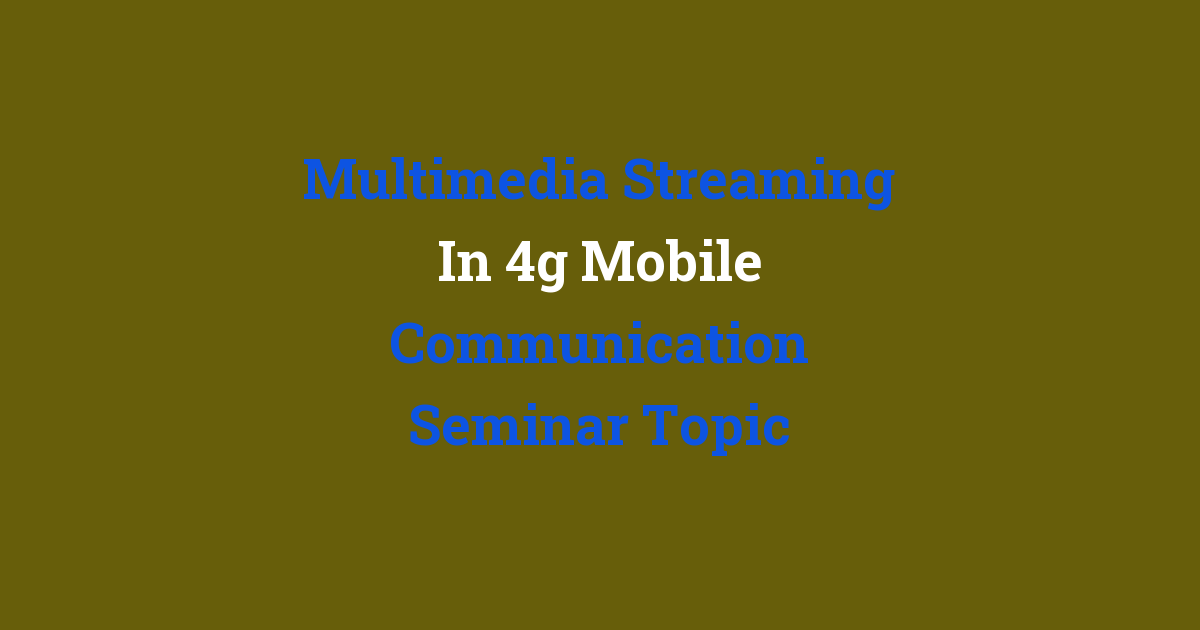The seminar topic is on multimedia streaming in 4G mobile communication.
Introduction
With the advancement of technology, multimedia streaming has become an integral part of our daily lives. The ability to stream videos, music, and other multimedia content on our mobile devices has revolutionized the way we consume entertainment. In this project, we will focus on multimedia streaming in the context of 4G mobile communication.
Problem Statement
While multimedia streaming has become more accessible with the implementation of 4G technology, there are still several challenges that need to be addressed. The existing system may not be able to handle the increasing demand for high-quality multimedia content, leading to buffering issues and poor video quality. Additionally, there may be security concerns related to streaming sensitive content over mobile networks.
Existing System
The existing system for multimedia streaming in 4G mobile communication relies on protocols such as HTTP Live Streaming (HLS) and Dynamic Adaptive Streaming over HTTP (DASH) to deliver content to users. While these protocols are effective in some ways, they may not always provide the best user experience. Buffering and latency issues can still occur, especially in areas with poor network coverage.
Disadvantages
- Potential buffering and latency issues
- Poor video quality
- Security concerns
- Dependence on specific protocols
Proposed System
Our proposed system aims to address the shortcomings of the existing system by implementing a more efficient and robust multimedia streaming solution. This solution will leverage the capabilities of 4G technology to deliver high-quality multimedia content to users with minimal buffering and latency.
Advantages
- Improved video quality
- Reduced buffering and latency
- Enhanced security features
- Flexibility in protocol usage
Features
Some of the key features of our proposed system include:
- Dynamic bitrate adaptation to optimize video quality based on network conditions
- Enhanced encryption algorithms to secure the streaming of sensitive content
- Support for multiple protocols to ensure compatibility with a wide range of devices
- Seamless integration with existing 4G mobile networks
Conclusion
In conclusion, the project on multimedia streaming in 4G mobile communication aims to improve the overall user experience when it comes to consuming multimedia content on mobile devices. By addressing the limitations of the existing system and proposing a more efficient solution, we hope to pave the way for a more seamless and enjoyable streaming experience for users around the world.

